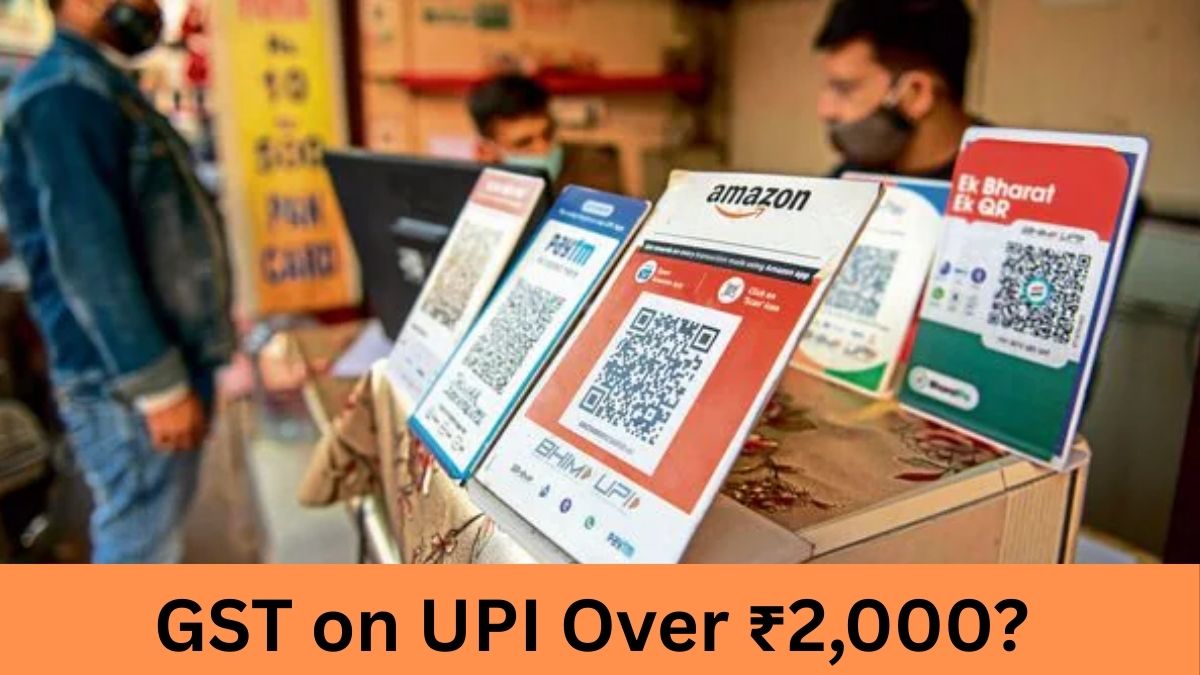Digital payments have become a cornerstone of India’s evolving financial landscape. With UPI (Unified Payments Interface) leading the transformation, millions of individuals and businesses now rely on seamless, real-time money transfers for everything from small purchases to major payments. However, a recent proposal reportedly under review by the Indian government could bring a significant change to this ecosystem—an 18% GST on UPI transactions exceeding ₹2,000.
Though still in the proposal stage, the idea has already sparked debate, especially considering India’s ongoing push for a cashless economy. If implemented, this move could affect the way digital payments are used, particularly among small merchants and regular users.
What Is the Proposed Change?
According to emerging reports, the government is considering levying the standard Goods and Services Tax (GST) rate of 18% on individual UPI transactions that exceed ₹2,000. The rationale? To improve tax transparency, widen the GST base, and ensure high-value digital payments contribute to formal revenue channels.
Currently, UPI payments are largely free of transaction fees and taxes, which has helped the platform gain popularity across urban and rural India. But under this proposed system, larger transactions—whether made peer-to-peer (P2P) or to merchants—may no longer be exempt.
This policy could mark a turning point in how India regulates its digital finance infrastructure.
Who Will Be Affected by This Policy?
Everyday Consumers
For regular users, this move could impact common day-to-day transactions. Payments for monthly rent, tuition fees, or even large grocery bills often cross the ₹2,000 threshold.
In response, users might be tempted to split payments into smaller chunks to stay below the taxable limit, but this workaround may not always be practical. For instance, many landlords, restaurants, or service providers might restrict partial payments, making it harder for users to avoid the tax burden.
Small Business Owners and Freelancers
Independent professionals and micro-entrepreneurs who rely on UPI for receiving payments might find themselves facing new compliance challenges. Currently, many of them are not registered under GST due to low annual turnover. But if large UPI transactions attract GST, these businesses might be required to register for GST, file returns, and possibly hire accountants or use software for compliance—adding to operational expenses.
Moreover, to protect their profit margins, many may pass the tax burden to their customers, effectively increasing service or product prices.
Why Is the Government Considering This Move?
The government’s goal appears to be twofold:
-
Boosting tax collection by expanding the scope of GST into high-volume digital transactions.
-
Encouraging formalization of digital financial activities, especially among small traders and freelancers who often operate outside the tax net.
The intent is to create parity between different modes of payment—especially when similar transactions conducted via debit or credit cards already fall under the GST umbrella when linked to taxable services.
However, it also poses a dilemma: Can India sustain the growth of UPI if additional charges erode its cost-free appeal?
Key Highlights of the Proposal
-
The 18% GST may apply to UPI transactions over ₹2,000.
-
Both peer-to-peer and merchant payments could be included.
-
The move is aimed at widening the GST base and encouraging tax compliance.
-
No official confirmation or rollout date has been provided yet by the Ministry of Finance.
This proposal is still under review, and changes to the threshold, exemptions, or the scope of applicability could still be made before any final announcement.
Potential Challenges and Public Sentiment
Digital payments have grown largely due to their ease of use and zero-fee model. A sudden shift towards taxation—especially on a widely used public utility like UPI—could be met with resistance. Critics argue that this could disincentivize digital transactions, pushing users back toward cash payments, which are harder to track and tax.
There are also concerns about privacy and data tracking, as higher surveillance of payment sizes might raise red flags for many users.
What Happens Next?
Until an official notification is issued, there is no change in the current status of UPI payments. The proposal is still being debated internally, and further consultations with stakeholders—including fintech firms, banks, merchant associations, and consumer rights groups—are likely to influence the final decision.
If you’re a frequent UPI user or run a business that heavily depends on digital payments, it’s a good idea to start monitoring transaction values and exploring alternative payment models that ensure compliance while minimizing extra costs.
Frequently Asked Questions
Q1. Is GST currently being charged on UPI payments?
No. As of now, UPI transactions are not subject to GST. The proposed 18% GST on payments above ₹2,000 is still under consideration.
Q2. Will peer-to-peer transfers also be taxed?
Reports suggest both P2P and merchant payments above ₹2,000 could fall under the tax net. However, the final framework may define exemptions or conditions.
Q3. What happens if I split my payment into smaller UPI transactions?
While technically a workaround, repeated small payments may be flagged by the system or limited by merchants. It’s also unclear if splitting will bypass taxation in the final rules.
Q4. Will this impact small businesses?
Yes. Small vendors, freelancers, and unregistered businesses may face new compliance requirements if they receive frequent high-value UPI transactions.
Q5. When will this rule come into effect?
No official implementation date has been announced. The proposal is still under review by the government.
Click here to know more.
Kishan is a knowledgeable writer specializing in agriculture and the latest government job recruitments, delivering clear and insightful content to inform and empower readers.

